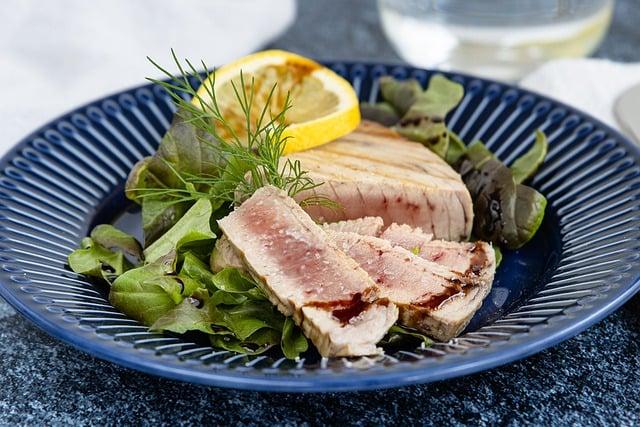Once upon a time in a cozy little house, a curious cat named Whiskers roamed the kitchen, sniffing out delicious scents. One day, he discovered a bowl filled with shiny, moist morsels—tuna! His eyes sparkled with delight. But as he nibbled, he remembered his wise friend, the old tabby, who had once shared secrets of feline feasts. “Chicken, turkey, and even a sprinkle of catnip,” she had said. Whiskers learned that a balanced diet, rich in protein and love, was the key to purring happiness. And so, he feasted wisely, thriving in his little kingdom.
Table of Contents
- Understanding Feline Nutritional Needs for Optimal Health
- Essential Ingredients for a Balanced Cat Diet
- Exploring the Benefits of Wet vs. Dry Cat Food
- Homemade Cat Food: Safe Recipes and Considerations
- Q&A
Understanding Feline Nutritional Needs for Optimal Health
When it comes to feeding our feline friends, understanding their unique nutritional requirements is essential for promoting their overall health and well-being. Cats are obligate carnivores, which means their diet must primarily consist of animal-based proteins. This dietary need stems from their evolutionary history, where they thrived on a diet rich in meat. Therefore, selecting high-quality protein sources is crucial for maintaining their muscle mass, energy levels, and overall vitality.
In addition to protein, cats require specific nutrients that are vital for their health. These include:
- Taurine: An essential amino acid that supports heart function, vision, and reproductive health.
- Arachidonic Acid: A fatty acid necessary for skin health and inflammatory response.
- Vitamin A: Important for vision, immune function, and skin health, which cats cannot synthesize from plant sources.
- Niacin: A B vitamin that plays a role in energy metabolism and overall health.
While protein is paramount, the right balance of fats and carbohydrates is also important. Healthy fats provide energy and support skin and coat health, while carbohydrates can serve as a source of quick energy. However, it’s essential to choose carbohydrates wisely, as cats have a limited ability to digest them. Opting for high-quality, digestible sources like brown rice or sweet potatoes can be beneficial, but they should not dominate the diet.
Lastly, hydration is a critical aspect of feline nutrition that is often overlooked. Cats have a low thirst drive and may not drink enough water, especially if they are fed a dry food diet. Incorporating wet food into their meals can help increase their water intake, promoting kidney health and preventing urinary tract issues. Additionally, always ensure fresh water is available to encourage proper hydration, which is vital for their overall health.
Essential Ingredients for a Balanced Cat Diet
When it comes to crafting a diet that keeps your feline friend healthy and happy, understanding the essential components is key. Cats are obligate carnivores, which means their bodies are designed to thrive on a diet primarily composed of animal proteins. This makes **high-quality meat** a cornerstone of their nutrition. Look for options like chicken, turkey, or fish, which not only provide the necessary protein but also essential amino acids such as taurine, crucial for heart and eye health.
In addition to protein, **healthy fats** play a vital role in a cat’s diet. Fats are a concentrated source of energy and are necessary for the absorption of fat-soluble vitamins. Omega-3 and Omega-6 fatty acids, found in fish oil and certain plant oils, contribute to a shiny coat and healthy skin. Including these fats in moderation can help maintain your cat’s overall vitality and well-being.
While cats primarily require animal-based nutrients, **fiber** is also important for digestive health. Incorporating small amounts of plant-based ingredients, such as pumpkin or green peas, can aid in digestion and help prevent hairballs. Fiber supports a healthy gut and can assist in regulating your cat’s weight, making it a valuable addition to their diet.
Lastly, hydration is often overlooked but is crucial for a balanced diet. Cats have a low thirst drive and may not drink enough water, especially if they consume dry food. To ensure adequate hydration, consider offering **wet food** options or incorporating water-rich foods into their meals. This not only helps maintain kidney health but also supports overall bodily functions, keeping your cat lively and energetic.
Exploring the Benefits of Wet vs. Dry Cat Food
When it comes to choosing the right food for your feline friend, the debate between wet and dry cat food often takes center stage. Each type has its own set of advantages that can cater to different needs and preferences. For instance, wet cat food is typically higher in moisture content, which can be beneficial for cats that may not drink enough water throughout the day. This added hydration can help support kidney function and urinary tract health, making it a great option for cats prone to urinary issues.
On the other hand, dry cat food offers its own unique benefits. One of the most notable is its convenience and longer shelf life. Dry kibble can be left out for free feeding, allowing cats to graze throughout the day without the risk of spoilage. Additionally, the crunchy texture of dry food can help reduce plaque and tartar buildup on your cat’s teeth, promoting better dental health. This can be particularly advantageous for pet owners looking to maintain their cat’s oral hygiene without the need for frequent vet visits.
Another factor to consider is the nutritional content of both wet and dry foods. Wet cat food often contains higher protein levels and fewer carbohydrates, which aligns more closely with a cat’s natural dietary needs as obligate carnivores. This can lead to better weight management and overall health. Conversely, many dry foods are formulated with a balance of nutrients that can support a cat’s energy levels and overall vitality, making them a suitable choice for active cats.
Ultimately, the decision between wet and dry cat food may come down to your cat’s individual preferences and health requirements. Some pet owners choose to offer a combination of both to provide variety and ensure their cats receive a well-rounded diet. By understanding the benefits of each type, you can make an informed choice that best supports your cat’s health and happiness.
Homemade Cat Food: Safe Recipes and Considerations
Creating homemade cat food can be a rewarding endeavor, allowing you to tailor meals to your feline’s specific needs. When preparing food for your cat, it’s essential to include a balance of protein, fats, and carbohydrates. Cats are obligate carnivores, meaning their diet should primarily consist of meat. Consider using ingredients such as:
- Chicken - A lean source of protein that many cats love.
- Turkey - Another poultry option that is rich in nutrients.
- Fish – Salmon or tuna can be a tasty treat, but should be given in moderation.
- Eggs – A great source of protein and essential fatty acids.
In addition to protein sources, incorporating healthy fats is crucial for your cat’s overall health. Fats provide energy and support skin and coat health. You can include:
- Fish oil – Rich in omega-3 fatty acids, beneficial for heart and joint health.
- Chicken fat – Adds flavor and moisture to meals.
- Flaxseed oil – A plant-based option that can also provide omega-3s.
While protein and fats are vital, don’t forget about the importance of vitamins and minerals. Cats require certain nutrients that may not be present in meat alone. Consider adding:
- Cooked vegetables – Such as carrots or peas, which can provide fiber and vitamins.
- Bone meal – A source of calcium and phosphorus for strong bones.
- Supplements - Such as taurine, which is essential for heart and eye health.
Before transitioning your cat to a homemade diet, it’s crucial to consult with a veterinarian or a pet nutritionist. They can help ensure that your recipes meet all of your cat’s nutritional needs and advise on portion sizes. Additionally, be cautious about certain foods that are toxic to cats, such as onions, garlic, chocolate, and grapes. By taking these considerations into account, you can create safe and nutritious meals that your feline friend will enjoy.
Q&A
-
What should be the main ingredient in cat food?
The main ingredient in cat food should be high-quality protein, such as chicken, turkey, or fish. Cats are obligate carnivores, meaning they require meat to thrive.
-
Is wet food better than dry food for cats?
Both wet and dry food have their benefits. Wet food provides hydration and is often more palatable, while dry food can help with dental health. A combination of both is often recommended.
-
Are there any human foods that are safe for cats?
Yes, some human foods are safe for cats in moderation. These include cooked chicken, turkey, and certain vegetables like peas and carrots. Always avoid toxic foods like onions, garlic, and chocolate.
-
How can I tell if my cat is allergic to their food?
Signs of food allergies in cats can include itching, skin irritations, gastrointestinal upset, or changes in behavior. If you suspect an allergy, consult your veterinarian for guidance and potential dietary changes.
nourishing your feline friend with the right foods is essential for their health and happiness. By choosing high-quality ingredients and understanding their unique dietary needs, you can ensure a purr-fectly balanced diet for your beloved cat.

大家好,我是彼得潘,專業的手法身體治療師。我喜歡探索和研究各種主題,並透過與人工智慧的合作分享專業、實用、有趣的文章。我們定期進行人工審核,以確保內容的準確性。如果您發現文章中有任何不準確的地方,請隨時與我們聯繫,我們會及時糾正。您可以透過 [email protected] 與我們聯繫。



